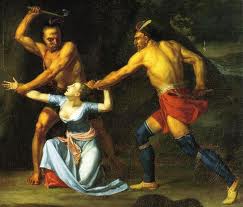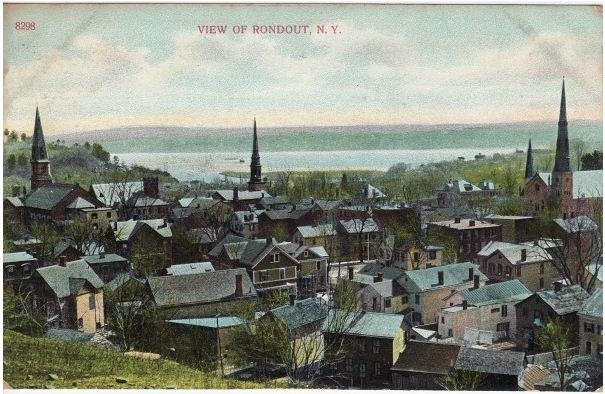
Harry Rigby, Jr.’s, “What’s the Answer” – March 11, 1960
Since the Indian tribes had been exterminated or driven out of the Hudson Valley well prior to the Revolutionary War, this area was largely spared the horrors of the tomahawk and scalping knife. A few valley settlers were scalped at Minisink, Fantine Kill and at Pine Bush, in Orange county, and at Shawangunk, Shandaken and in the Town of Rochester, in Ulster county, but we escaped the large-scale massacres such as those at Cherry Valley and Wyoming.
History indicates that the Indians, long before the arrival of the white man, had occasional lifted and preserved the scalp of a particularly valorous enemy but the ritual was by no means as widespread as it later became through the encouragement of the whites. The French, the British – and, yes, the Americans – hired the Indians to kill whichever other white group with which they were warring and they wanted proof of murder before they paid out the King’s or the Congress’ good hard gold – so the Indians were encouraged to produce scalps, just as you take a pair of wolf’s ears to the County Clerk to collect the wolf bounty.
Scalping became a business, a bloody business, and was carried on in a strictly business like way during the Revolution, as was proved by the inventory accompanying a bale of scalps captured by the Americans from a small British Army detachment on its way to Canada.
Bale #1 was listed as containing “43 scalps of Congress soldiers…stretched on black hoops…the inside of the skin painted red with a small black spot, to note their being killed with bullets. Also 62 of farmers, killed in their houses; the hoops painted red – the skin painted brown and marked with a hoe – a black circle all around, to note their being surprised in the night – and a black hatchet in the middle, signifying their being killed with that weapon.”
Bale #2 contained scalps of “98 farmers” marked similarly to those in the first bale except that they were painted with a “great white circle and sun, to show that they were surprised in the daytime.” They were also marked with “a little red foot, to show
that they stood upon their defense, and died fighting for their lives and families.”
Bale #3 also contained farmer’s scalps, 97 of them, painted as heretofore except that the hoops were green “to show that they were killed in the fields.”
Bale #4 was listed as containing scalps of 102 farmers, “18 marked with a little yellow flame, to denote their being of prisoners burned alive, after being scalped.” “One of these latter, supposed to be of an American clergyman, his band being affixed to his scalp.” The inventory notes, with satisfaction, “Most of the farmers appear by the hair to have been young or middle-aged men, there being but 97 very gray heads among them all; which make the service more essential.”
Bale #5 contained “88 scalps of women; hair long, braided in the Indian fashion, to show they were mothers – hoops blue, skin yellow ground with little red tadpoles to represent, by way of triumph, the tears of grief occasioned by their relations – a black scalping knife or hatchet at the bottom, to mark their being killed by those instruments. Seventeen others, hair very gray, showed “the short club or casse-tete, to show they were knocked down dead or had their brains beat out.”
Bales #6 and #7 contained, respectively, “193 boys scalps of various ages” and “all girls’ scalps, big and little” and these, too, were marked to show how the victims met their deaths. Bale #8 contained “a mixture of all the varieties to the number of 122; with a box of birch bark, containing 29 little infants’ scalps, of various sizes.”
Today, we only have to worry about holding on to our hat – in those days, you worried about hanging onto your hair!

Pretty gruesome to consider the scene of a farmer being surprised in his field, wife and children back in the cabin, perhaps the son in the barn w/ the horses. It must have been frightening to the extreme.
Wow very interesting… Hard to believe such documentation and detail found
Very interesting indeed. The sheer numbers alone in each bale indicates a lot of lives lost. Amazing we are all here.